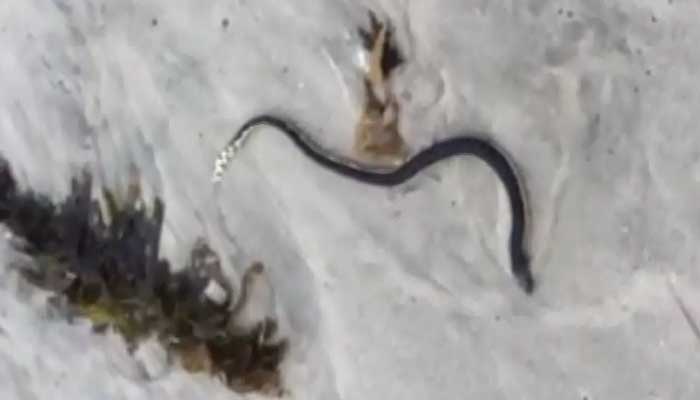-
Tips for becoming a good boxer - November 6, 2020
-
7 expert tips for making your hens night a memorable one - November 6, 2020
-
5 reasons to host your Christmas party on a cruise boat - November 6, 2020
-
What to do when you’re charged with a crime - November 6, 2020
-
Should you get one or multiple dogs? Here’s all you need to know - November 3, 2020
-
A Guide: How to Build Your Very Own Magic Mirror - February 14, 2019
-
Our Top Inspirational Baseball Stars - November 24, 2018
-
Five Tech Tools That Will Help You Turn Your Blog into a Business - November 24, 2018
-
How to Indulge on Vacation without Expanding Your Waist - November 9, 2018
-
5 Strategies for Businesses to Appeal to Today’s Increasingly Mobile-Crazed Customers - November 9, 2018
Venomous Sea Snake Washes Up On Beach
“It looked lethargic when I approached”.
Advertisement
The 2ft-long snake, which is descended from Asian cobras and Australian tiger snakes, typically lives in warm tropical waters and is more common near Baja California, Mexico.
The discovery of rare, venomous sea snakes along the Southern California coast this week is directly related to El Niño, scientists say.
After being found on Friday, the snake was sent to the Los Angeles County Natural History Museum, where samples were taken for DNA analysis, the Los Angeles Times reported.
The onset of the system is proving to have ununsual effects on where wildlife is popping up these days, allowing animals, such as sea snakes, to ride warm ocean currents across the Pacific and Indian Oceans. Reports of whale sharks and pelagic red crabs and hammerhead sharks have also cropped up during the period of warmer ocean waters.
“It’s an insanely attractive specimen”, he said, admiring the snake’s triangular head, its bright yellow underside and its flattened yellow tail with black spots. It can remain under water for up to 90 minutes.
It is unclear if the two reported sightings were of the same snake or different snakes. Bites to humans are rare and normally occur when people try to touch or pick up the snakes.
The snake from the second sighting was transported to a U.S. Fish and Wildlife Service’s office nearby and died soon after, according to the Los Angeles Times.
“The species is entirely aquatic”, said Pauly.
Advertisement
Is it possible for these creatures to wash up to our shores?





























